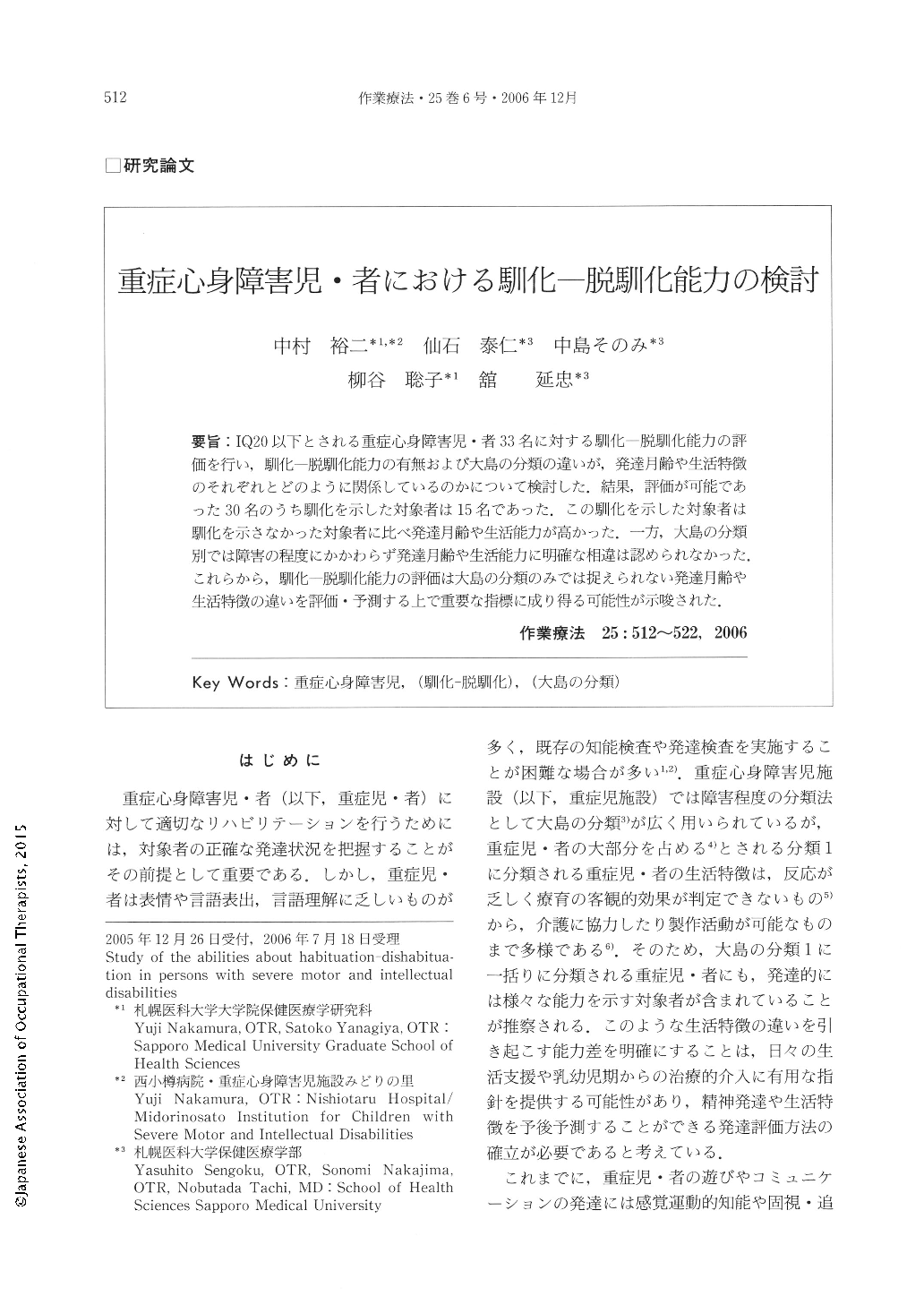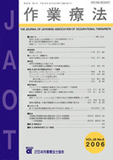Japanese
English
- 販売していません
- Abstract 文献概要
- 1ページ目 Look Inside
- 参考文献 Reference
要旨:IQ20以下とされる重症心身障害児・者33名に対する馴化—脱馴化能力の評価を行い,馴化—脱馴化能力の有無および大島の分類の違いが,発達月齢や生活特徴のそれぞれとどのように関係しているのかについて検討した.結果,評価が可能であった30名のうち馴化を示した対象者は15名であった.この馴化を示した対象者は馴化を示さなかった対象者に比べ発達月齢や生活能力が高かった.一方,大島の分類別では障害の程度にかかわらず発達月齢や生活能力に明確な相違は認められなかった.これらから,馴化—脱馴化能力の評価は大島の分類のみでは捉えられない発達月齢や生活特徴の違いを評価・予測する上で重要な指標に成り得る可能性が示唆された.
In this study, we evaluated the abilities of habituation-dishabituation, which were one of visual cognition abilities in an infant, and in 33 persons with sever motor and intellectual disabilities (SMID). Besides, we discussed a relationship between the existence of the abilities of habituation-dishabituation/Ooshima classification and the developmental age, and the features of daily living. As a result, we obtained 30 available pieces of data, from which we recognized the existence of 15 persons who exhibit habituation in SMID, and they exhibit higher developmental age and abilities of daily living than the 15 persons who did not exhibit habituation. In contrast, using Ooshima classification, we didn't recognize a difference in a developmental age and abilities of daily living regardless of degree of disabilities. Therefore, we thought that the assessment of the abilities of habituation-dishabituation is a critical assessment in evaluating the prognosis with regard to the differences in developmental age and abilities of daily living, that is, those that were not evaluated using only the Ooshima classification.

Copyright © 2006, Japanese Association of Occupational Therapists. All rights reserved.


